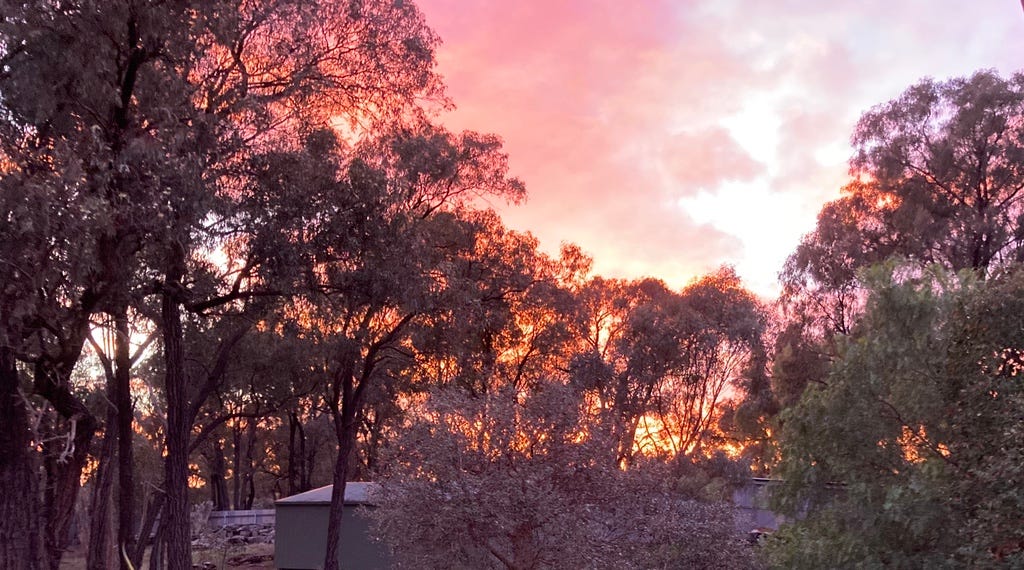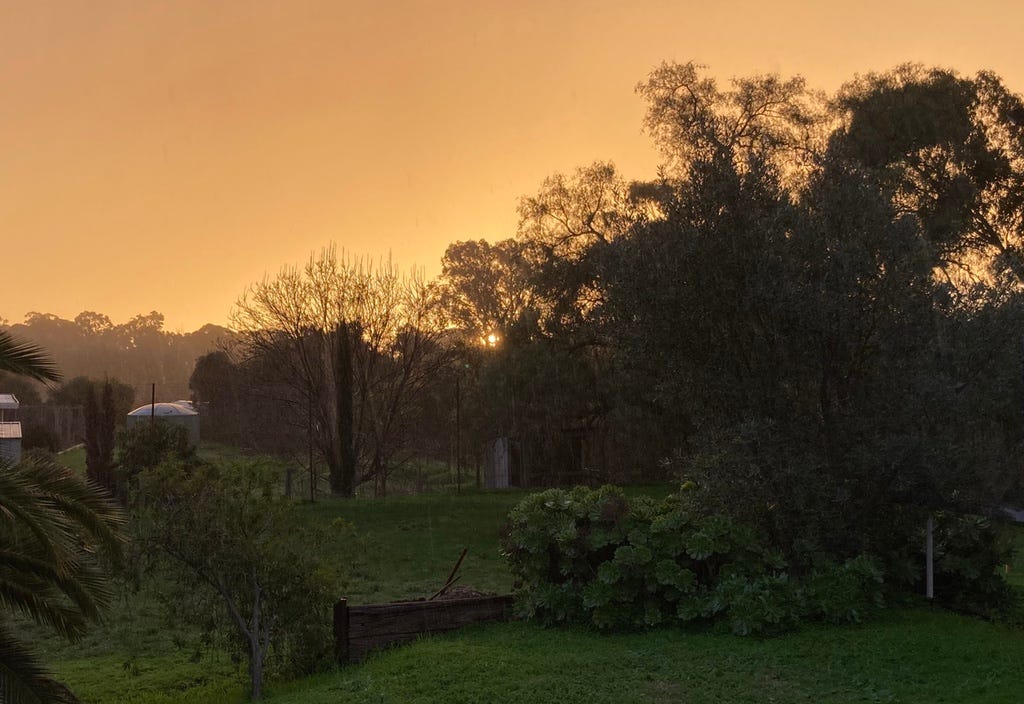In this episode we take another look at the differences between weather and climate, and what their changes mean.
It’s cold here again today: just above freezing, a light frost on the ground. But it doesn’t get much colder up in this part of Victoria - we rarely get any snow, and even when we do, it’s rarely more than a thin sprinkle, just enough to remember what snow looks like but not much more than that.
Sure, the climate here does have its own extremes: at my old place just down the road, the coldest I’d recorded there was -10˚C, the hottest a bit above 40˚C. But it’s not extreme like we’d see in other places, other countries: the -30˚C with deep snow of the north-east US, for example, or the relentless bitter grey just-above-freezing-and-damp of south-east England.
And the felt experience can be very different from the straightforward statistics might suggest. A Russian colleague of my mother’s once said that the two coldest places he’d ever been were Edinburgh and (English) Cambridge - the bitter wind in both those places made it seem far colder even than his native Siberia. And a dry heat is very different from a humid one: try Sydney in summer, for example, or the Strait of Hormuz, between the Emirates and Iran, from where we get the English expression '“round the bend”…
Weather is the part of climate that we can see changing, day by day. We can see differences at sunrise:
…and at sunset:
In some places, the weather can change not so much day-by-day, but hour-by-hour, even minute-by-minute. It’s often said that Melbourne can have “four seasons in one day”; “if you don’t like the weather, just wait around for half an hour, you’ll get a different one”. Sometimes sort-of predictable; often not.
Climate is more like the pattern for weather. Like weather, it does change, though usually much more slowly. Sometimes there’s a shorter-term change, such as the huge eruption of Mt Tambora in 1815 whose ash, blasted into the high atmosphere, blocked out the sunlight, to cause 1816’s global-scale ’The Year Without A Summer’. Sometimes the sun itself fades back for a longer while, such as the ‘Little Ice Age’ from the 16th century through to the early 19th century. And whilst some would still argue about the cause, there’s little doubt that there’s a lot of change happening at present to global climate, with huge longer-term temperature-changes in the near-polar regions and elsewhere.
Unlike weather, we can’t see climate as such. Not directly. Not really. Weather is an event, whereas climate is a pattern of such events: we can only infer climate indirectly. by comparing weather-events to other weather-events at another time or place.
And conversely, climate is made up of the myriad of small-changes that we see as ‘the weather’. When there’s a change in climate, it’s the whole pattern of weather that changes. A big-change, made up of changes to the patterns of small-changes.
That’s also true for so many other types of big-change too. What we might think of as big changes in society, economics, politics and more, all of those big-changes are made up of that same myriad of often-subtle small-changes.
Or, in short, to notice the big-changes, we first have to pay attention to all the small-changes, and how the small-changes themselves are changing in some way.
Which is why it’s so important to notice the small-changes. Once we understand how to work with the small-changes, the big changes we need can look after themselves.





So true Tom, we in Africa experience the impacts of El Nino and La Nina climate patterns, with a cycle of 2-7 years affecting our weather patterns. The impact on local fisheries may well be an indicator of worse things to come with warming oceans an indicator of the beginning of a new cycle. Parts of South Africa have experienced a severe drought with the accompanying impact on agriculture.